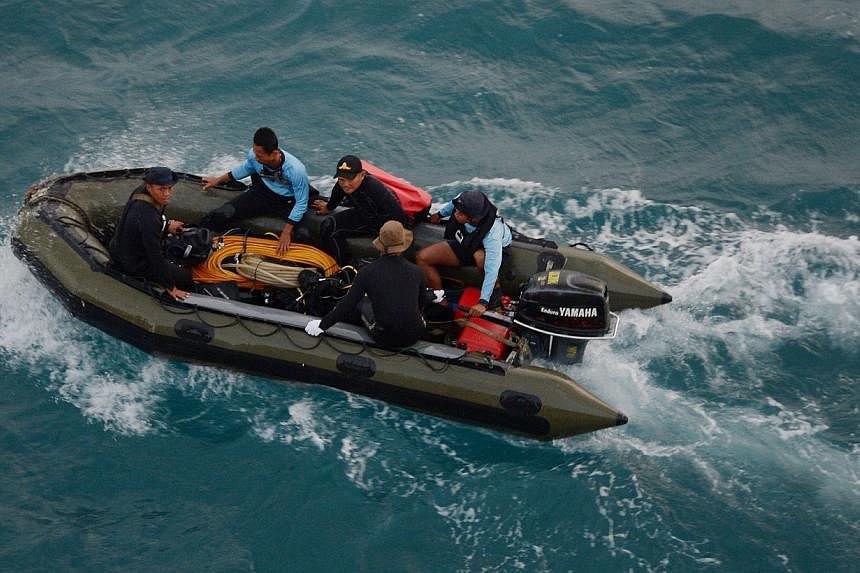PANGKALAN BUN (AFP) - Clinging desperately to underwater ropes, an Indonesian search leader said his divers appeared to be "flying like Superman" as they scoured the seabed in the gruelling quest to recover bodies and wreckage from crashed AirAsia flight QZ8501.
"The current is so strong that it could rip open our masks or drag us into a whirlpool," said Totok Subagio, in charge of a group that this week found the plane's two black box flight recorders, after a lengthy, difficult search.
Trained to swim to depths of 45 metres, the Indonesian navy's finest frogmen were drafted in to scour the seabed for wreckage of the Airbus 320-200 that went down in a storm on Dec 28 en route to Singapore.
But in the Karimata Strait between Indonesia's Sumatra island and Borneo island, they have had to contend with rough seas, powerful underwater currents, and weather that changes from bright and sunny one moment to cloudy and rainy the next.
Grainy images from specialist Singaporean search equipment Wednesday showed the plane body resting on the seabed, with part of the Malaysia-based airline's slogan "Now Everyone Can Fly" painted on the red-and-white exterior clearly visible.
Divers now face the grim task of examining the main body of the aircraft in the hope of finding more of the 162 victims who were on board the plane, believed trapped inside the fuselage. Almost three weeks into the search, just 50 bodies have so far been retrieved.
- 'Two-metre-high wave is a blessing' -
Ferdy Hendarto, head of the navy's local underwater rescue division, described how divers would descend along ropes attached to buoys on the sea's surface marking the locations of the plane's wreckage.
The currents are so strong they can be dragged sideways and at times appear to be "flying like Superman", he said.
The search has been tough even for veteran divers, with some suffering nosebleeds after spending too long at depths of 30 metres.
Conditions on the surface have also been rough, with some vomiting on their way out to hunt for the wreckage as their tiny boats were hit by waves four metres high.
"In that search area, a two-metre-high wave is a blessing," Subagio said.
Most days divers have had only a four-hour window in the early morning when they can search, before clouds obscure the sun and reduce visibility underwater, rendering search efforts impossible.
In the hunt for the plane's two black boxes, divers equipped with devices able to detect the "ping" signals emitted by the devices would inch along the seabed, dropping weighted markers in areas where they picked up the signals.
Digging at the sandy sea floor where the boxes were believed buried, diver Rajab Suwarno succeeded in locating both the recorders, which contain a wealth of data crucial for determining what caused the crash.
One of the boxes - which are actually orange in colour and designed to survive underwater - was trapped under the remains of the aircraft, making it more difficult to retrieve.
He described finding one of the boxes: "That morning the sunlight was penetrating the water, it was very clear. We moved some small debris aside and dug in the white sand - and, thank God, we found it."

